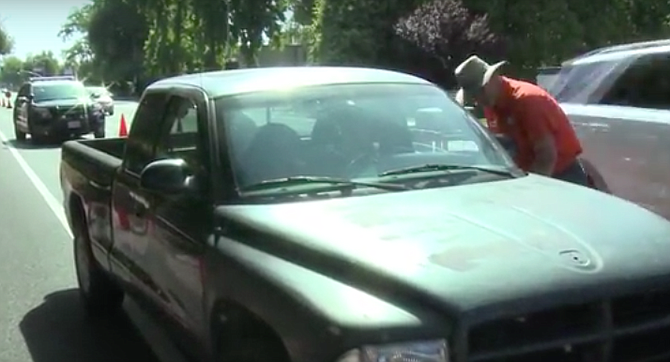 Facebook
Facebook
 X
X
 Instagram
Instagram
 TikTok
TikTok
 Youtube
Youtube

Some drivers in Point Loma were thrown for a loop on Tuesday after being waved over for a smog checkpoint set up along Nimitz Boulevard.
“Looks like they are testing two at a time. CHP present. Never seen this ever before in my 40 years in California,” Shanna shared via Facebook. “It was still there at 2:00 pm...between Harbor and Rosecrans, on Nimitz. And, of course Rosecrans/Nimitz intersection was a cluster.”
Matt Woodcheke from the California Department of Consumer Affairs, explained the checkpoints.
“The California Bureau of Automotive Repair’s roadside inspection program (with the assistance of the California Highway Patrol) provides an overview of the emissions emitted by vehicles driven on California's roads to help ensure the State is meeting federal standards for reducing ozone-forming pollution generated by motor vehicles, and helps BAR to evaluate the performance of the smog check program.”
“The Bureau of Automotive Repair conducts these unannounced, voluntary, roadside inspection surveys year-round.”
There was an inspection point today (Aug 8) on 47th Street, northbound between Market and Hilltop.
Because it’s the California Highway Patrol (CHP) waving people over, drivers who encountered the checkpoint in Point Loma expressed concerns about what was going on.
The most important thing to know is that participation is voluntary. CHP is not detaining you. These are surveys only, and there are no consequences to drivers who refuse to participate and no consequences if you fail. At the end of the approximate ten-minute test, you will be given a copy of the test results.
But how do they decide where to conduct them?
“The surveys are performed in the areas of the state with large vehicle populations and air quality issues, including the Central Valley, the San Francisco Bay area, the greater Los Angeles area, Inland Empire, and San Diego area,” Woodcheke told me. “The Bureau randomly selects ZIP codes in these areas and then identifies suitable sites where it can safely conduct the surveys.”
“The roadside program has been around since 1985 but it’s not surprising that you’ve never seen one,” Woodcheke said. ”There are four teams that conduct the inspections and they work all over the state. They check about 10,000 vehicles a year at roadside inspections, which sounds like a lot but with over 35 million registered vehicles in the state, it’s pretty unlikely to run across them.”


Some drivers in Point Loma were thrown for a loop on Tuesday after being waved over for a smog checkpoint set up along Nimitz Boulevard.
“Looks like they are testing two at a time. CHP present. Never seen this ever before in my 40 years in California,” Shanna shared via Facebook. “It was still there at 2:00 pm...between Harbor and Rosecrans, on Nimitz. And, of course Rosecrans/Nimitz intersection was a cluster.”
Matt Woodcheke from the California Department of Consumer Affairs, explained the checkpoints.
“The California Bureau of Automotive Repair’s roadside inspection program (with the assistance of the California Highway Patrol) provides an overview of the emissions emitted by vehicles driven on California's roads to help ensure the State is meeting federal standards for reducing ozone-forming pollution generated by motor vehicles, and helps BAR to evaluate the performance of the smog check program.”
“The Bureau of Automotive Repair conducts these unannounced, voluntary, roadside inspection surveys year-round.”
There was an inspection point today (Aug 8) on 47th Street, northbound between Market and Hilltop.
Because it’s the California Highway Patrol (CHP) waving people over, drivers who encountered the checkpoint in Point Loma expressed concerns about what was going on.
The most important thing to know is that participation is voluntary. CHP is not detaining you. These are surveys only, and there are no consequences to drivers who refuse to participate and no consequences if you fail. At the end of the approximate ten-minute test, you will be given a copy of the test results.
But how do they decide where to conduct them?
“The surveys are performed in the areas of the state with large vehicle populations and air quality issues, including the Central Valley, the San Francisco Bay area, the greater Los Angeles area, Inland Empire, and San Diego area,” Woodcheke told me. “The Bureau randomly selects ZIP codes in these areas and then identifies suitable sites where it can safely conduct the surveys.”
“The roadside program has been around since 1985 but it’s not surprising that you’ve never seen one,” Woodcheke said. ”There are four teams that conduct the inspections and they work all over the state. They check about 10,000 vehicles a year at roadside inspections, which sounds like a lot but with over 35 million registered vehicles in the state, it’s pretty unlikely to run across them.”
Comments